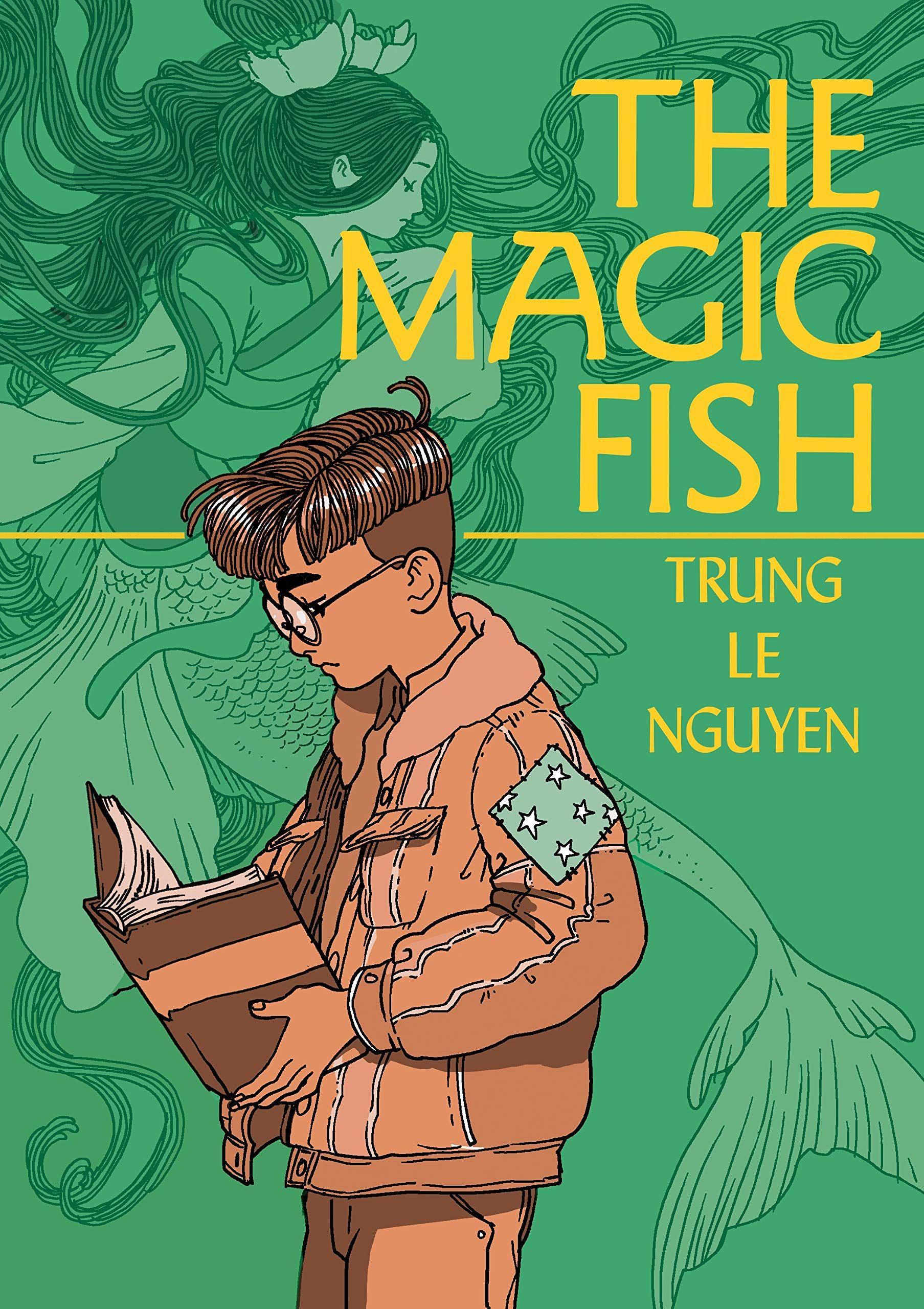Trungles’ The Magic Fish Is the Queer Story We All Need
- WRITER
- Trung Le Nguyen
- Artist
- Trung Le Nguyen
- Letterer
- Trung Le Nguyen
- Cover Artist
- Trung Le Nguyen
- Publisher
- Random House
- Price
- 16.99
- Release Date
- 2020-10-13
- Colorist
- Trung Le Nguyen
In a stunning depiction of fairy tales, family, identity and love, Trung Le Nguyen adds an important narrative to LGBTQ literary canon with his debut graphic novel, The Magic Fish. Partially based on Trungles' own life, the story follows Tiến, a 13 year-old Vietnamese-American boy whose immigrant parents check out books in English from the library and read them aloud to practice the language.
As Tiến reads stories about Cinderella and the Little Mermaid with his mom, he struggles to tell her something important: He's gay.
There are a few barriers to Tiến coming out. Primarily, he cannot find a Vietnamese word for his sexuality, even after asking a librarian for help. He's also nervous about how his family will react; although he knows his parents love him, he knows that some coming out stories don't have happy endings.
To underscore this fact, Nguyen includes a scene where Tiến reacts to TV news about Matthew Shepard, a gay college student in Wyoming who was brutally murdered for his sexuality in 1998. The Magic Fish primarily focuses around fairy tales, but it's also very grounded in real life -- and that makes its message and execution all the more potent.
Although Tiến is young and this story is primarily aimed at middle-grade readers, the simple fact is that it will appeal to readers of all ages. It also gives young, queer readers one of the single most important messages they can receive from queer elders: There is absolutely nothing wrong with them. Their stories matter. Whatever happens, they are and will always be worthy of love.
It will come as no surprise to fans of Trungles' work that The Magic Fish is a thoroughly stunning debut. His recreation of the fairy tales Tiến reads are as fantastical as they are elegant, and each panel feels like a breath of crisp, cool, refreshing air. The dialogue is straightforward and the characters' emotions are never in question, even when they are in flux. Nguyen's focus on facial expressions and small details brings every interaction to life, whether in a story being read aloud by Tiến or narrated by his mom, or an actual scene taking place in the real world of the book.
Through a limited color palette, Trungles is also able to focus on what matters most: The characters' communication with each other. Language is a major element of The Magic Fish, of course, but so is the simple act of storytelling. Furthermore, the book reinforces the idea that stories can change -- in fact, they often need to change. As the book flows between fairy tales and Tiến's real life, the colors shift accordingly and makes those transitions obvious, but they never distract or pull focus.
There's a delicate balance to telling stories-within-a-story and Trungles manages it beautifully in The Magic Fish. This graphic novel is an absolute must-read, packed with genuine emotion, a truly touching narrative arc and art so beautiful it's literally breathtaking.
The Magic Fish is available now, everywhere books are sold.

